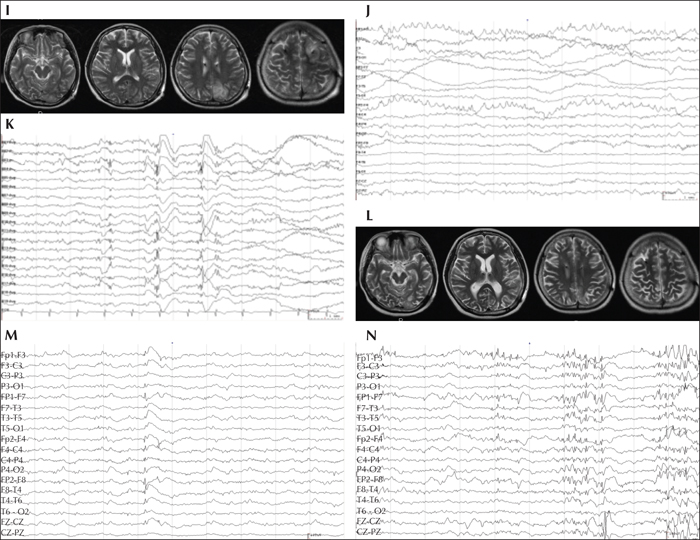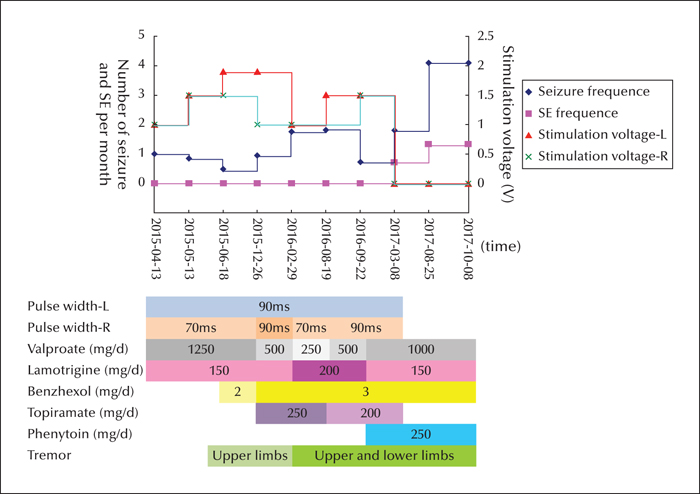Epileptic Disorders
MENUDeep brain stimulation of the anterior nucleus of the thalamus in a patient with super-refractory convulsive status epilepticus Volume 21, issue 4, August 2019
- Key words: anterior nucleus thalamus, deep brain stimulation, epilepsy surgery, super-refractory status epilepticus
- DOI : 10.1684/epd.2019.1086
- Page(s) : 379-84
- Published in: 2019
We report the first patient to die from refractory convulsive status epilepticus (SE) after the removal of a stimulator. The removal occurred after a two-year period of successful control of super-refractory convulsive SE with deep brain stimulation of the bilateral anterior nucleus of the thalamus (ANT-DBS). The female patient, born in 1990, suffered from high fever and seizures, and was diagnosed with viral encephalitis in 2005. After four weeks of medical treatment, she recovered with no neurological disabilities, but suffered from monthly seizures. Ten years later, the patient presented with convulsive SE, while four months pregnant in February of 2015. Her SE remained super-refractory to drugs despite the termination of pregnancy. Therefore, ANT-DBS was performed in March of 2015. The patient became SE-free following activation of an ANT-DBS stimulator. However, the stimulation treatment was terminated according to the family's request when a tremor developed two years after the treatment had begun. Subsequently, four SE episodes occurred and the tremor did not improve. The stimulator and electrodes were removed in August of 2017. The patient died of an uncontrolled SE two months later. This case demonstrates the effectiveness of ANT-DBS for emergency super-refractory convulsive SE with both positive and negative outcomes.



